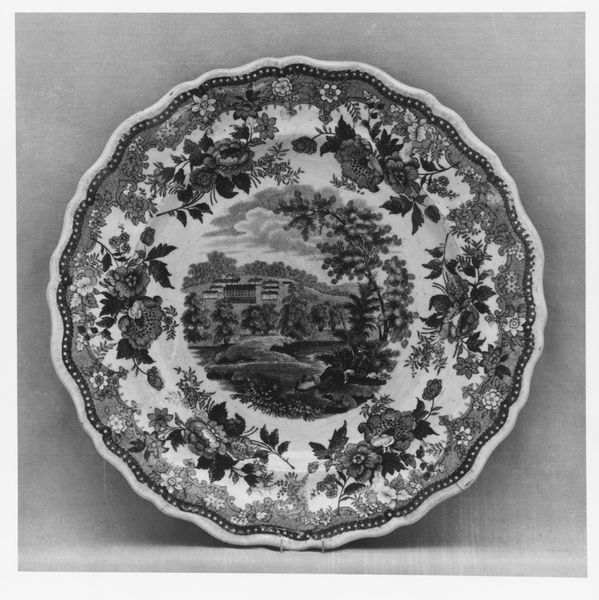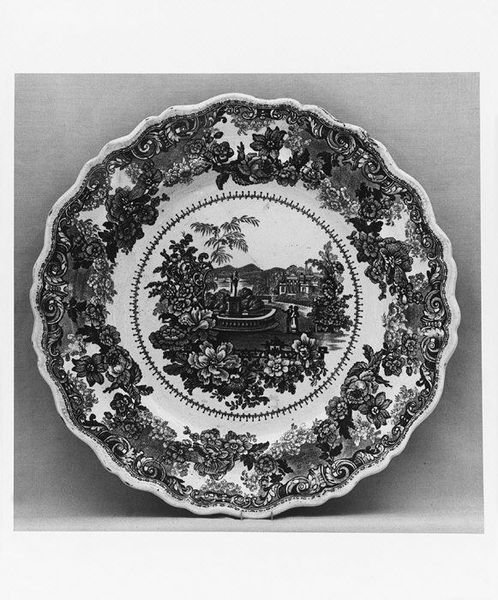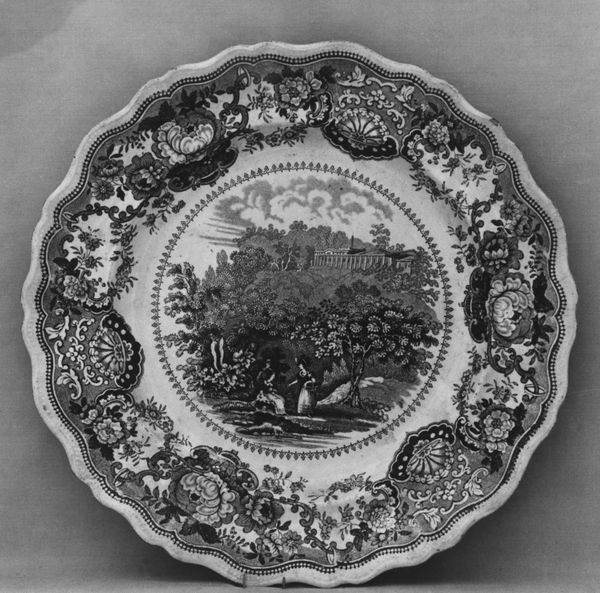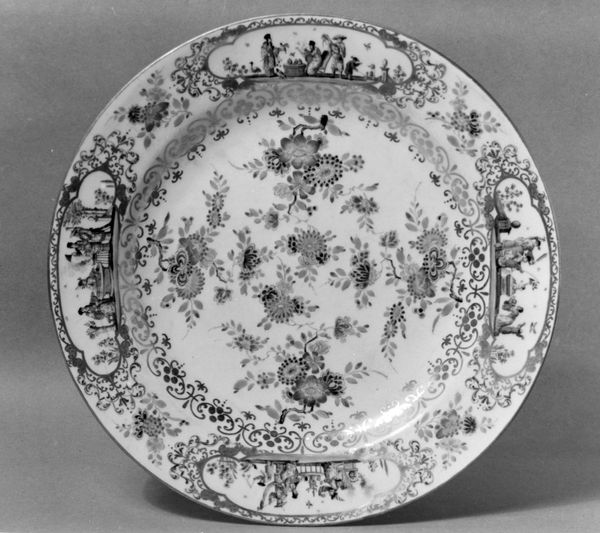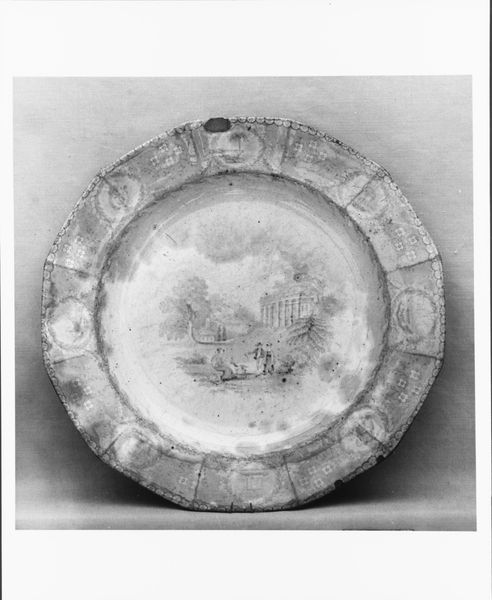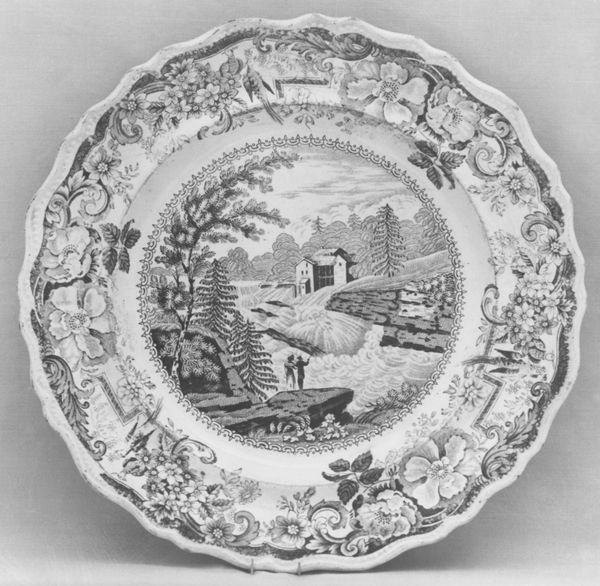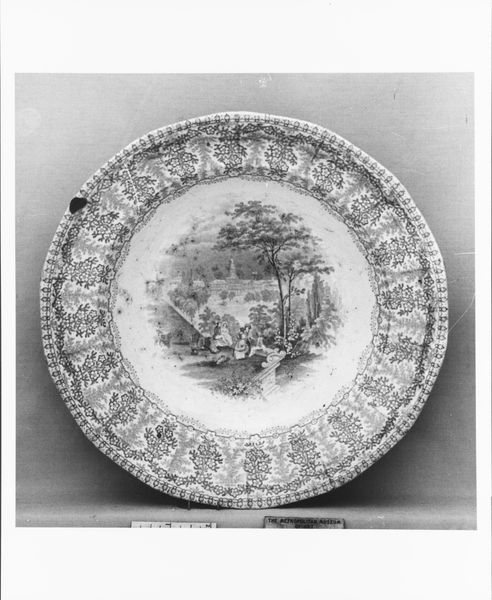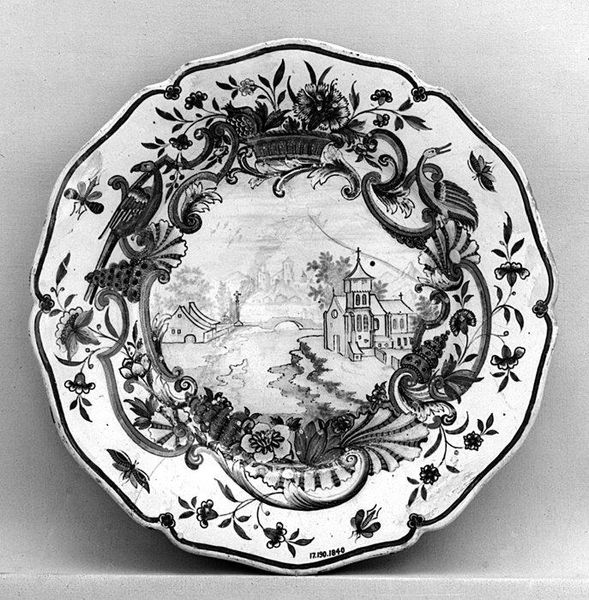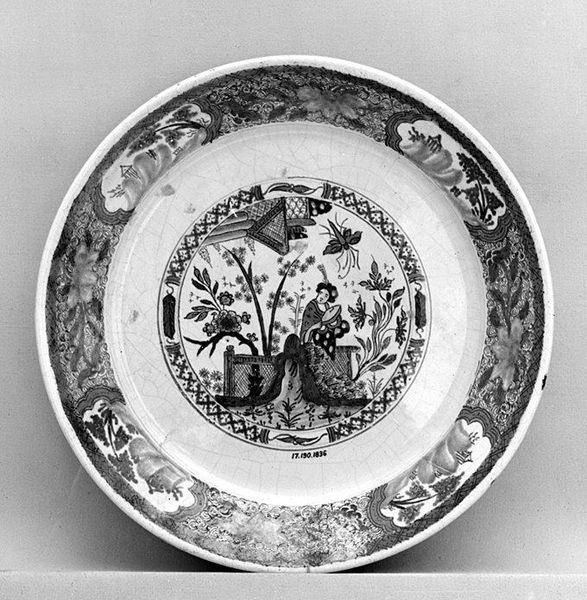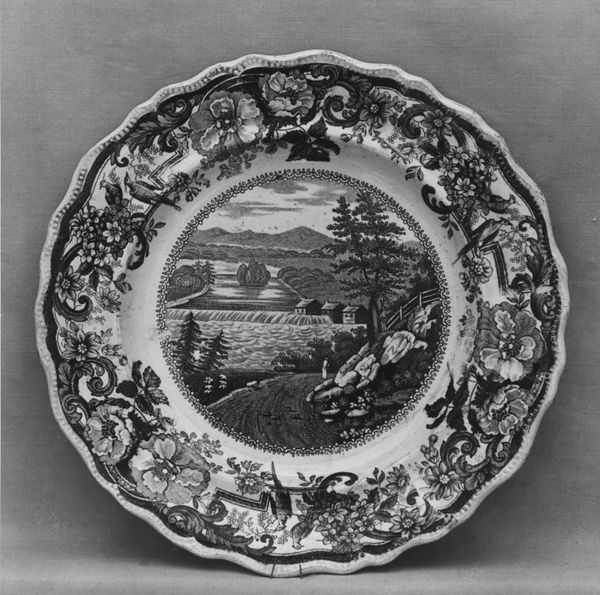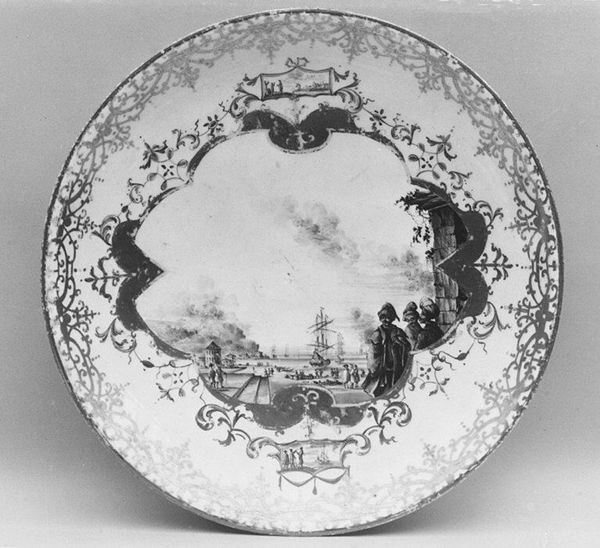
ceramic, earthenware
#
landscape
#
ceramic
#
flower
#
earthenware
#
stoneware
#
folk-art
#
england
#
romanticism
#
genre-painting
#
decorative-art
Dimensions: Diam. 8 7/8 in. (22.5 cm)
Copyright: Public Domain
Editor: Here we have an earthenware plate, made sometime between 1828 and 1838 by Job and John Jackson. It's lovely, almost like a transfer-printed photograph on ceramic. What do you see in this piece, from your perspective? Curator: I see a reflection of early 19th-century England, striving for elegance, even in the everyday. Look at the way this decorative object, clearly intended for domestic use, depicts a picturesque landscape with classical elements. It embodies a widespread aspiration to the gentrified life through manufactured imagery. What sort of audience was it aimed at? Editor: Presumably not the very wealthy, who could afford hand-painted porcelain? More of the aspiring middle class? Curator: Exactly! The rise of industrial ceramic production and transfer printing made these idyllic scenes accessible to a wider consumer base. Notice the romantic depiction of nature: the bridge, the boaters, even the decorative border, are deliberately arranged. Think about the politics embedded in these depictions, in controlling how even leisure time might look! Were such romantic ideals necessarily accurate or accessible for everyone in this era? Editor: I guess it makes me think about the ways images, then and now, shape perceptions of the world, often masking the complexities of society with carefully constructed idealizations. I'd never thought about plates in this way. Curator: Precisely. Everyday objects can be powerful agents in disseminating ideology, telling us not just what to value, but *how* to value it. The decorative arts allow for an examination of the democratization of imagery, with political consequences.
Comments
No comments
Be the first to comment and join the conversation on the ultimate creative platform.
